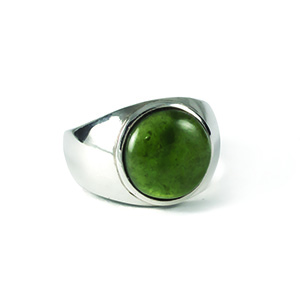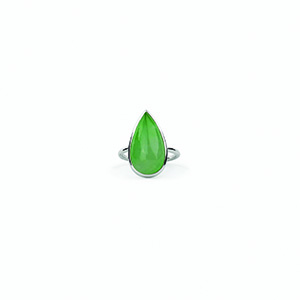
Throughout history gem minerals have been associated with different cultures and religions, admired for their beauty and prized for their protective and healing properties.
Jade has a long lineage with prehistoric artefacts found in Asia, Europe, North and Central American and New Zealand dating back thousands of years and continues to be cherished by modern cultures lured by its rich heritage, beauty and rarity and as a symbol of prosperity, success and good luck.
‘Jade’ is a term that can be applied to two separate minerals, jadeite and nephrite. Both are metamorphic rocks, made up of tiny interlocking crystals. This aggregate structure makes both gemstones exceptionally tough and an excellent carving material for tools, ornaments and, of course, for jewellery.

Both jadeite and nephrite have differing chemical compositions as well as physical and optical properties making them easily separable through laboratory investigation. However, to the consumer some specimens may have a very similar appearance and can be easily confused. ‘Typical’ stones of jadeite may have a lighter, brighter green and nephrite a deeper, darker shade of green although both minerals come in various hues and tones.
Adding to the many shades of green, jadeite can also be found in a wide range of other colours including yellow, orange, red, white, grey, brown and lavender. Colouration is rarely even and is often streaked or mottled. The most prized quality is ‘imperial’ jadeite, a deep rich emerald green that owes its colour to chromium. A rare green of nephrite is typically darker although can be light green as well as white, yellow, brown, grey or black with iron and magnesium responsible for colour.
Many jade imitations exist with both man made material as well as natural minerals used under the guise of misnomers such as ‘regal jade’ (green aventurine) and ‘Australian jade’ (chrysoprase).

A lesser-known stone, maw sit sit is a fine-grained opaque material whose main constituent is Ureyite. It is a vivid yellow-green with patches of white and black, the green being caused by jadeite inclusions. Although not accepted as a true jade, this stone can be quite expensive with exceptional quality stones reserved for gold jewellery. Bunny Bedi, owner and designer at Made In Earth, has used this green gem for his sterling silver designs.
“Maw sit sit is an interesting stone with an interesting name. After trading some Australian minerals for a stunning parcel of maw sit sit it has been a shining star of our jade collection. There are so many imitations and treatments it can be really difficult to purchase authentic stones. We buy our stones already cut and polished into cabochons from a jade dealer in Hong Kong with most of our stones originating from Myanmar.”
A stone of significance and great power, jade will continue to attract people for its remarkable beauty, durability and rarity for centuries to come.